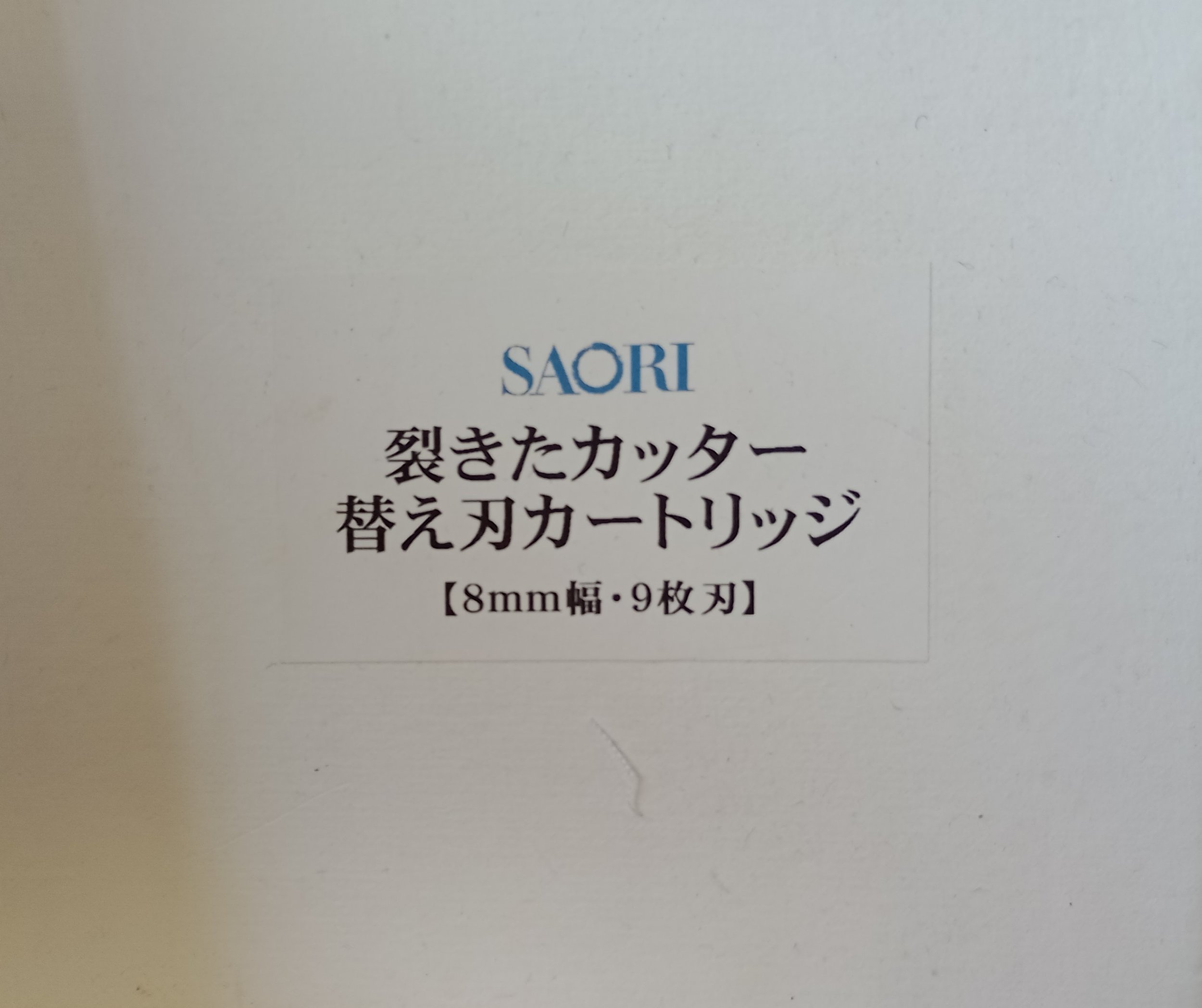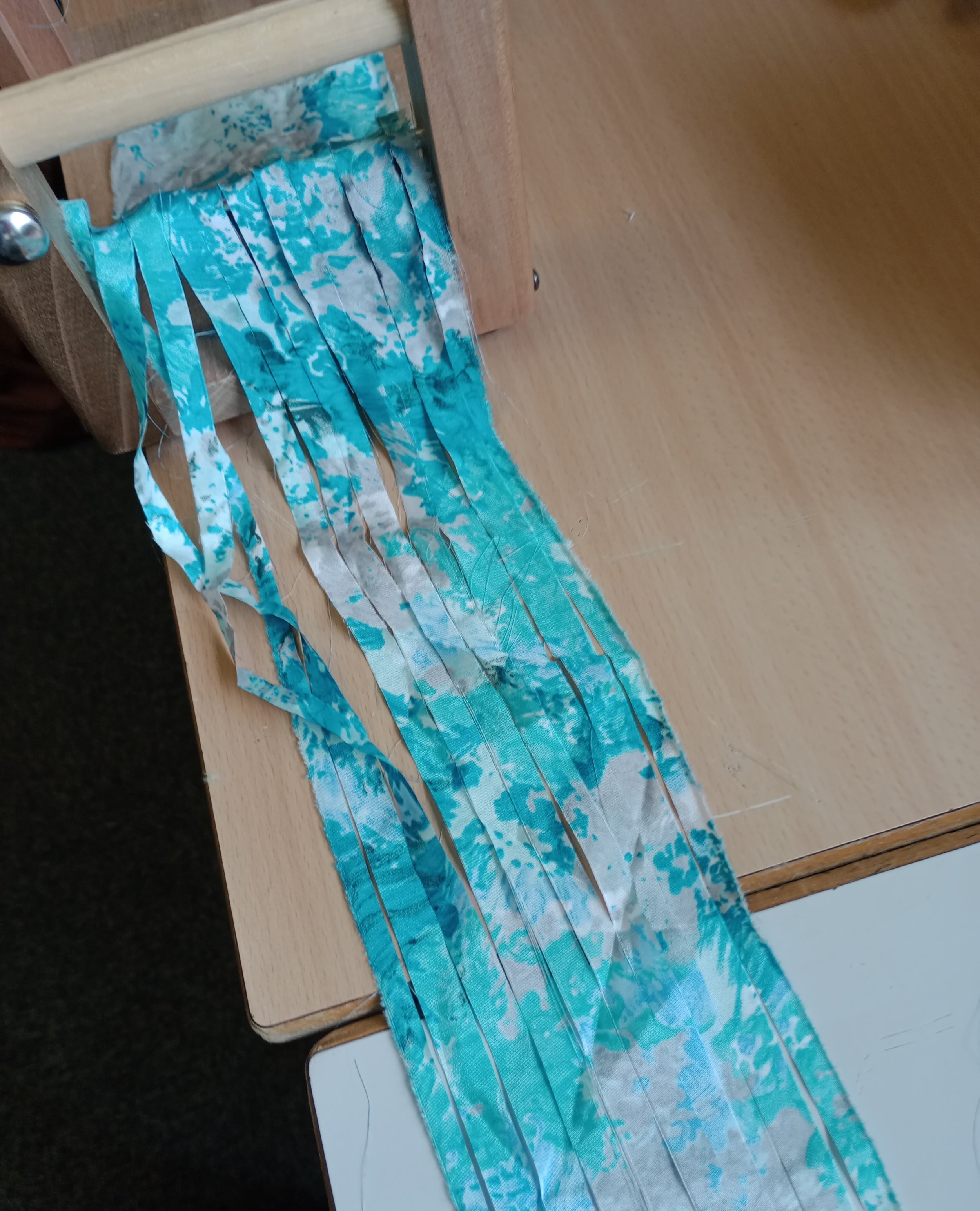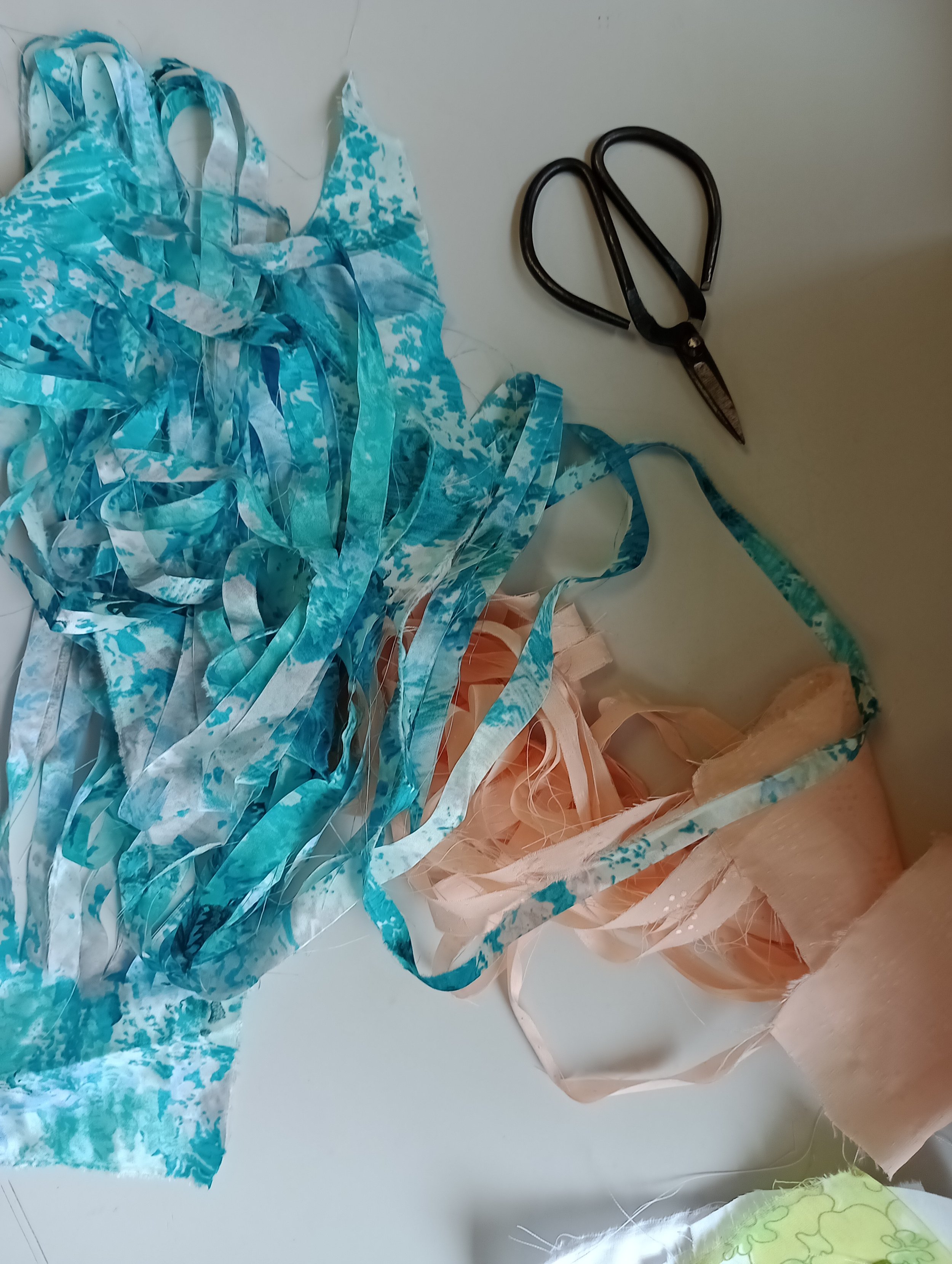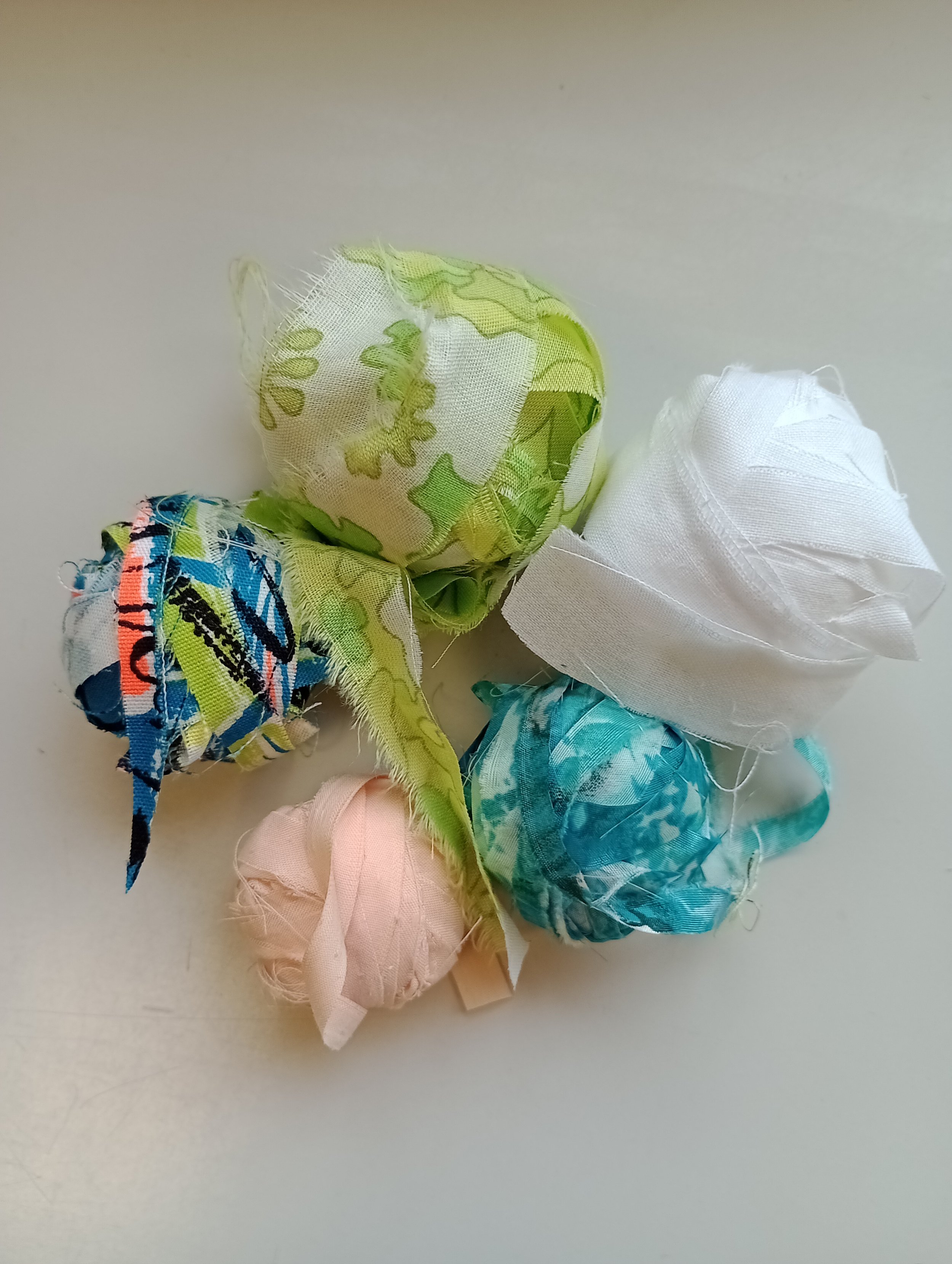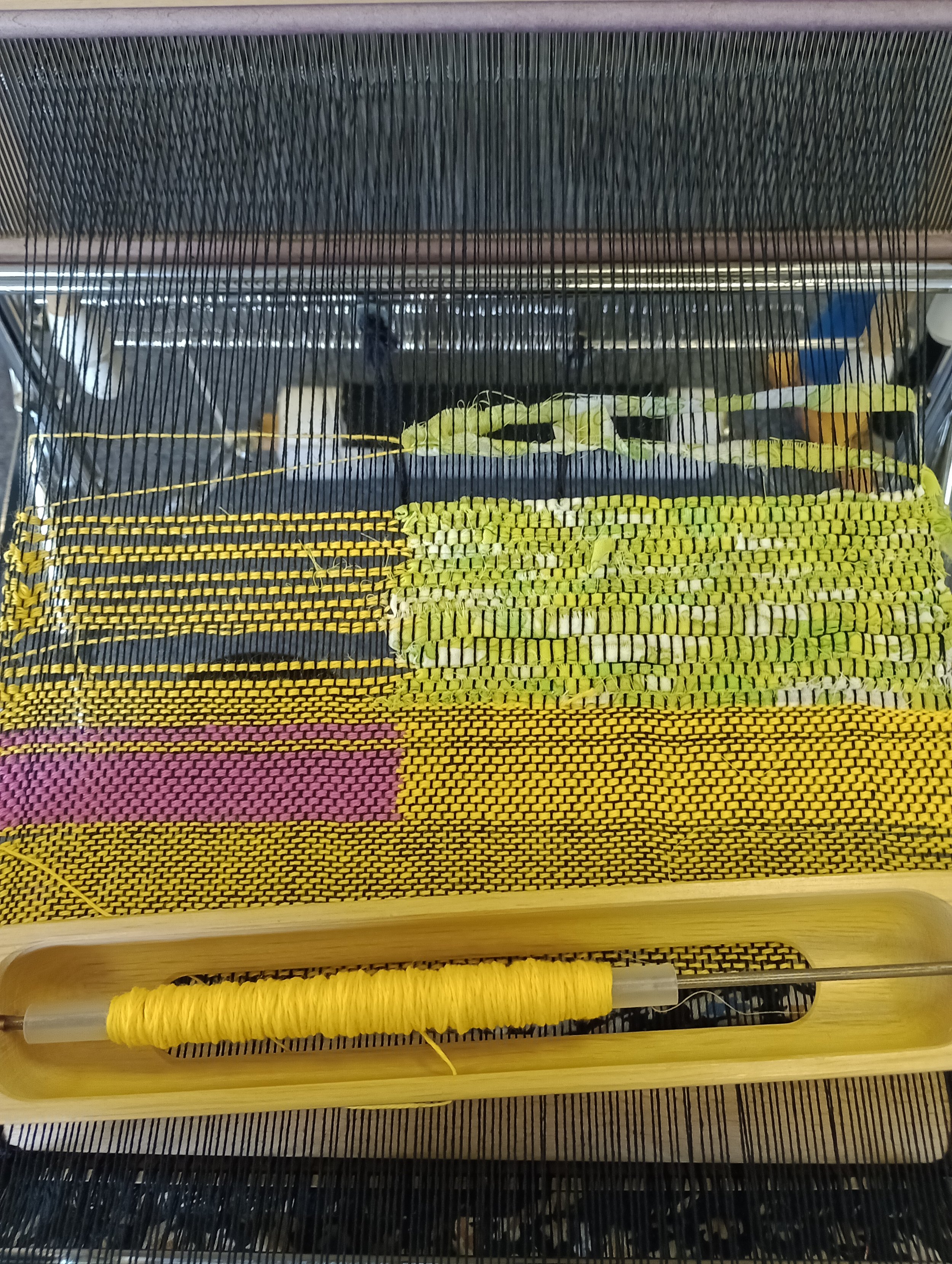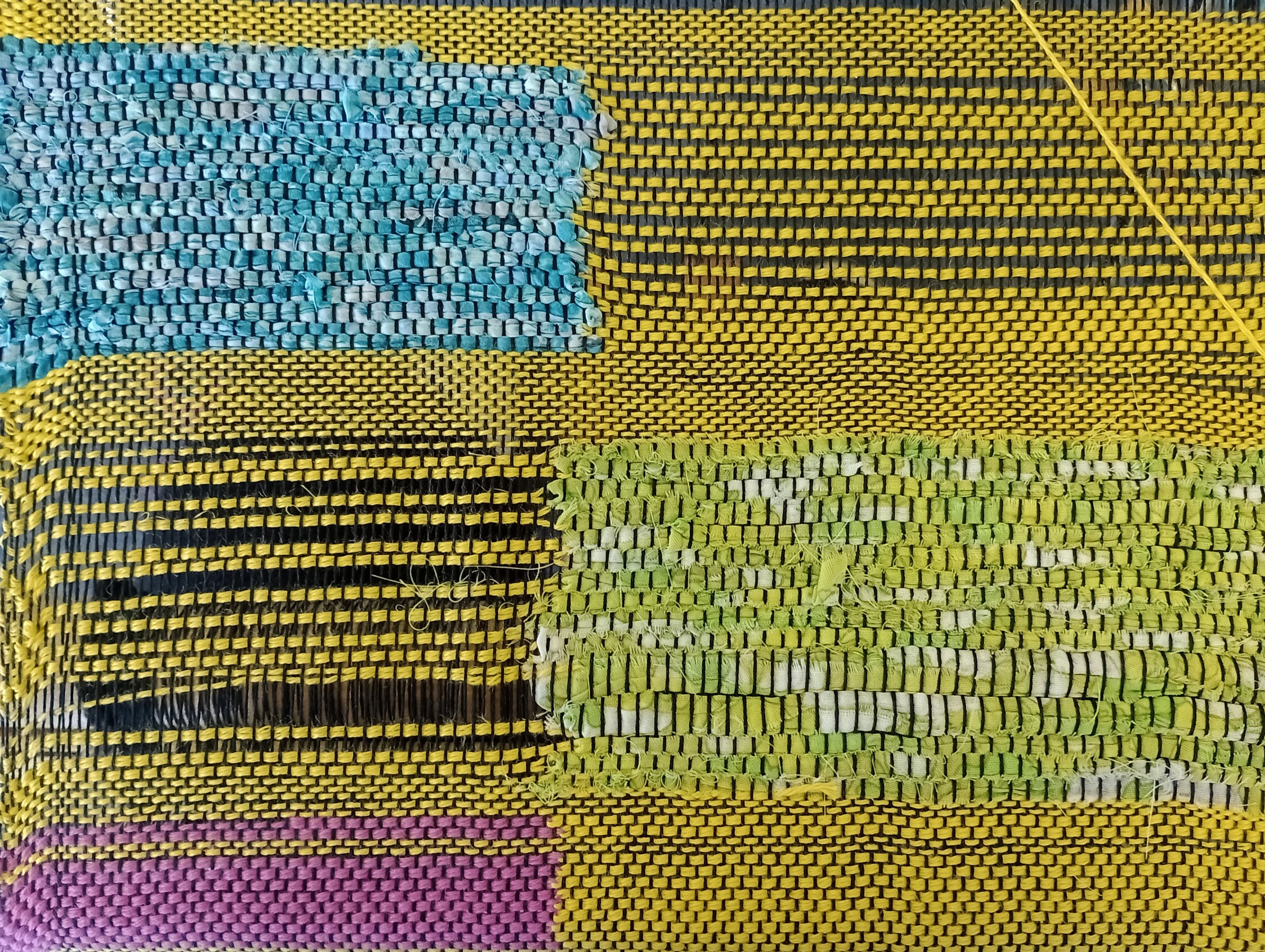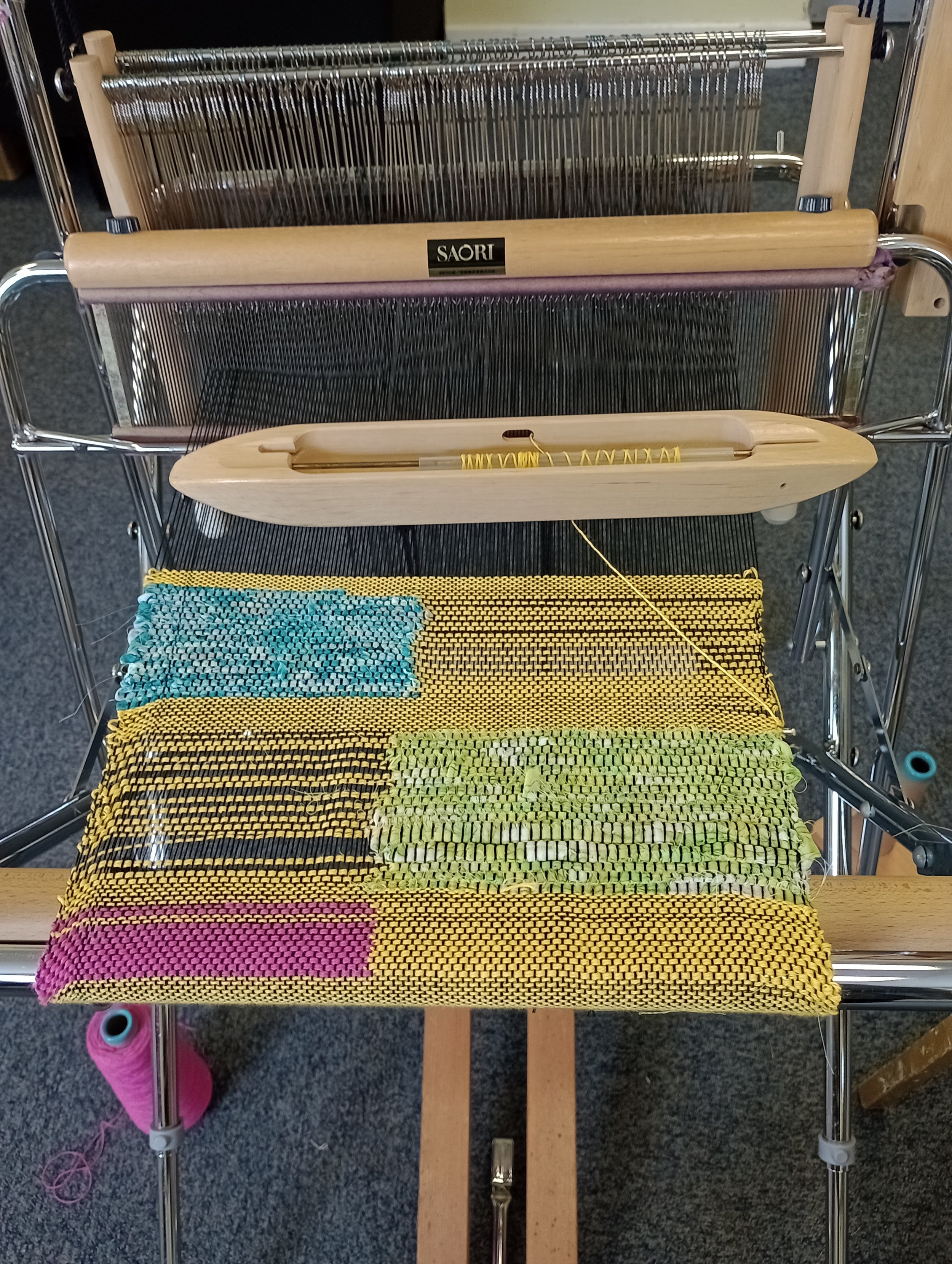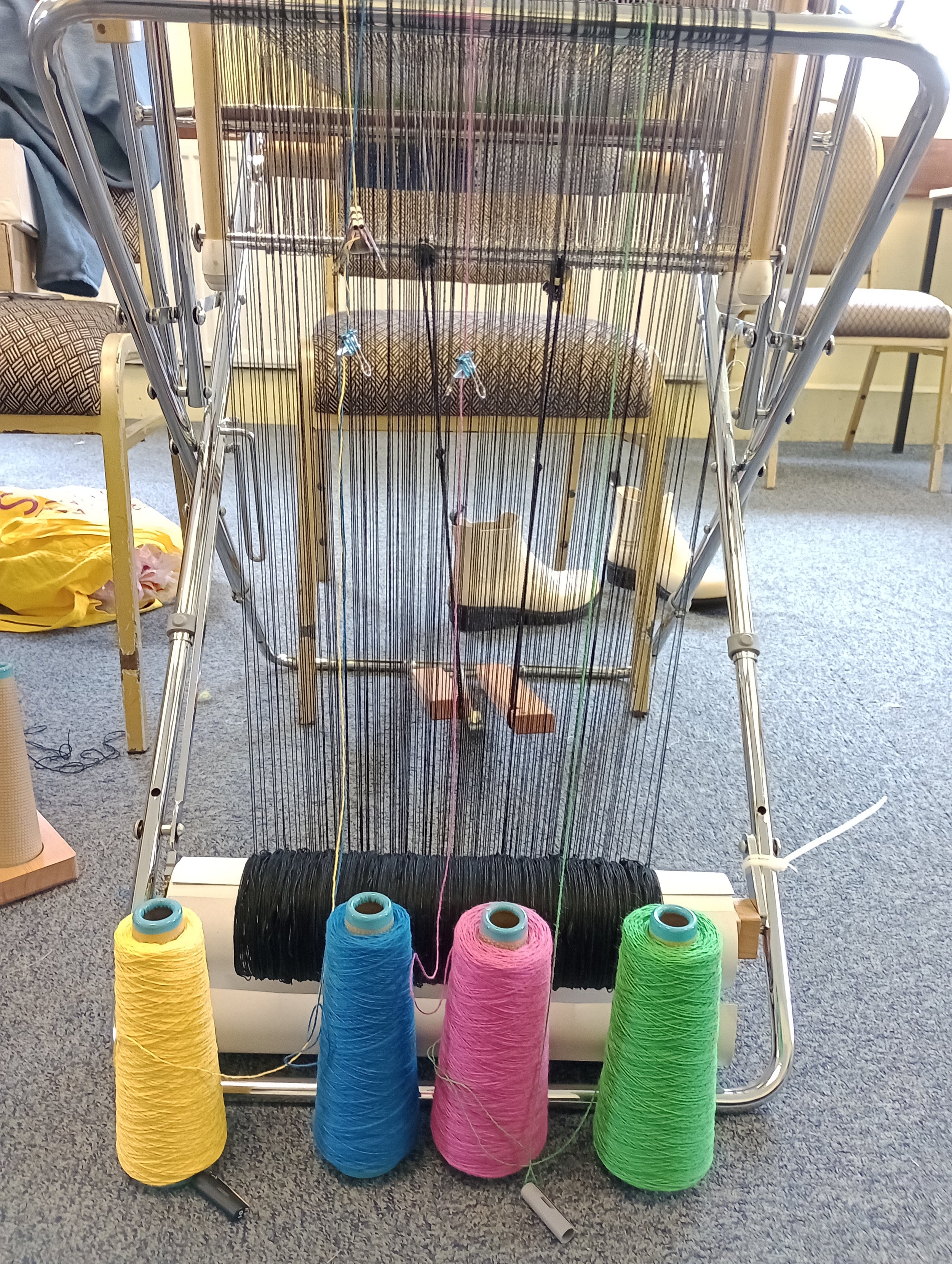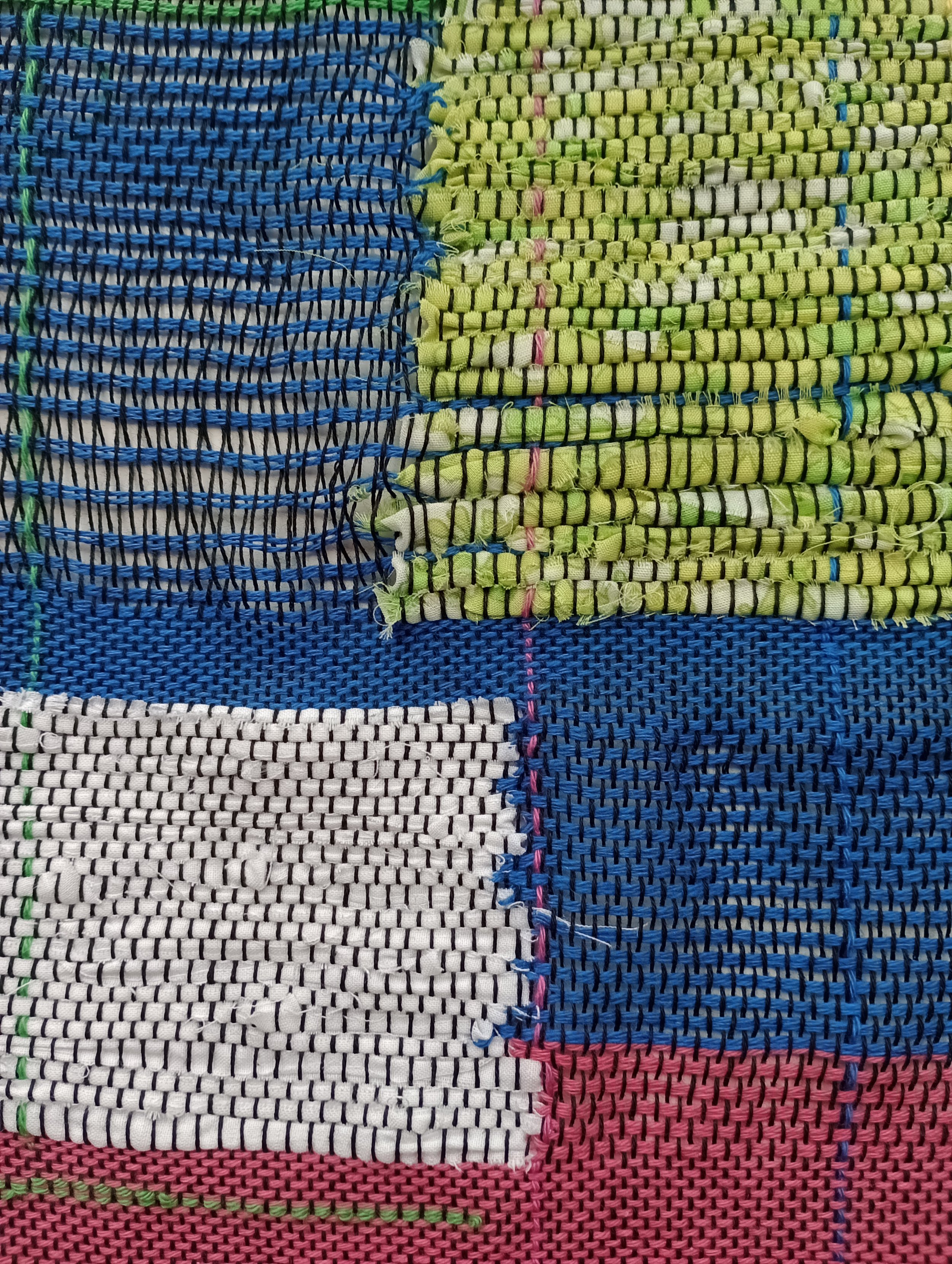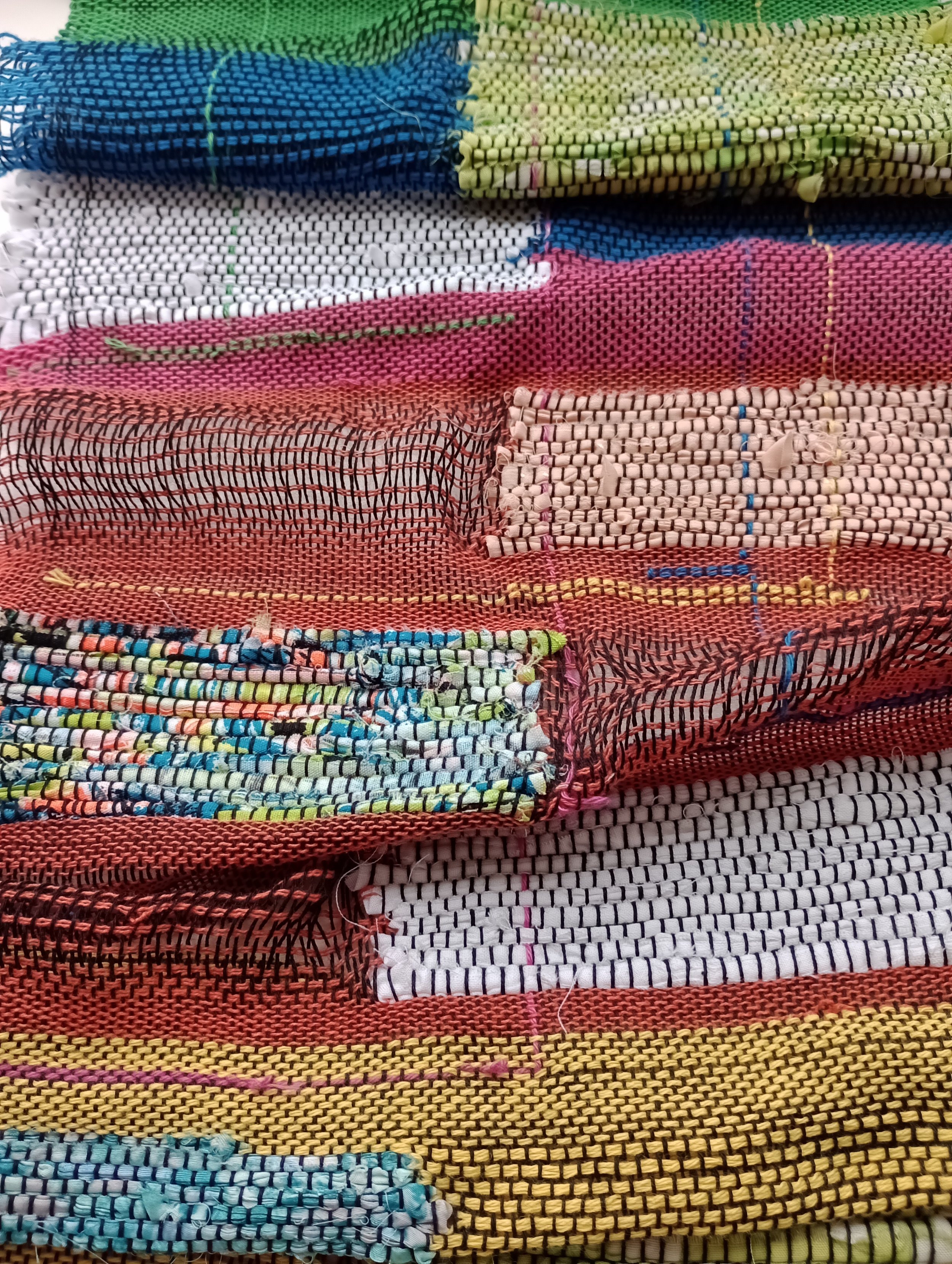INTUITIVE THREADS - AN EXPLORATION OF THE NATURE AND ROLE OF INTUITION IN THE CREATIVE PROCESS THROUGH SAORI AND INTUITIVE APPROACHES TO WEAVING.
I attended my 3rd SAORI weaving workshop on Friday 21st March with Amanda Edney of Beautiful Cloth SAORI Studio. This is part of my Intuitive Threads project exploring the nature of intuition in creativity through Saori and intuitive weaving methods. After attending two previous workshops, I was starting to feel more at home at the village hall at Napton, so when I arrived 10 minutes late, I apologised, made myself coffee and helped myself to biscuits. Part of my excuse for being late was I had to wait for the bin lorry to leave the narrow road to the village hall at Napton, the same thing happened the last time though so ideally I’d have been even earlier arriving. Anyway this actually turned out quite well as the three other people in the workshop were beginners taking their first Saori class, and it had given Amanda time to go through the introduction with them and get them set up to start weaving. After my coffee Amanda suggested I get together my yarns and wind bobbins to use before I started weaving. I chose bright coloured yarns this time, yellow, orange, pink, blue and green. This is quite a contrast to last time when I chose white and neutral colour yarns.
I had already decided before the workshop that I wanted to try the techniques Amanda had shown me at the last weaving day. These were Sakiori, weaving with yarns made from strips of fabric, and extra threads in the warp to add colour and interest. Before the workshop I had gone through my collection of fabrics at home and put together a collection of materials to bring with me. Perhaps most people don’t have a large box of assorted fabrics and materials hidden in a cupboard, but it turns out that I do, even if I’d forgotten about it for a long time. Most of the material came from my grandmother, after she died in 2006, I inherited most of her fabric collection. She had been a dress maker who made wedding and bridesmaid dresses as well as clothes for herself and the family in her younger years. When I was a young child, she would make coordinating outfits for me and my younger brother and sister. Some of these fabrics brought back memories of clothes she had made and times in my childhood. I found a brightly coloured graffiti style design that she had made my younger brother a pair of Bermuda shorts in, I seem to remember this being quite the thing in 1980s fashion. I’ve always quite liked the bright luminous neon colours of this fabric so I decided to use it in my weaving.
The Sakiori process using the SAORI cutting tool was a little more challenging to master than I had expected, it took me a couple of attempts to get even strips of fabric. The tool is a block of blades set at 5 or 8mm apart that you press into a strip of fabric stretched and held into the bottom part of the device that is clamped to the table. You then carefully pull the fabric through the blades to make strips. You have to then cut the ends, making sure to get a continuous yarn. Although it’s time consuming, it’s much quicker and easier than it would be to cut fabric into strips with scissors. I had to make decisions about which fabrics to use as I had far more options than I had time to make yarns. I wound the Sakiori yarns into balls, which is the traditional thing to do. It took me until we took a break for lunch at 12.30pm to prepare the fabric yarns and I was worried that I wouldn’t have enough time for weaving. I had to give myself a little reminder that however the day worked out was the way it was meant to, and everything was fine. This is something I’ve been working on in general, noticing when anxiety and stress comes up and accepting things for what they are and letting the anxiety go as much as possible.
Before I had started making the sakiori yarn, I began weaving a few rows in yellow cotton yarn then including a block of pink yarn as a clasped weft. At this point it was an act of will power to step away from this and follow the plan of making sakiori fabric yarns because I felt I wanted to continue with what I’d started. Would this have been the intuitive thing to do? Maybe. But as it happens when I returned to weaving after lunch, with my collection of Sakiori yarns and yellow, blue, orange, pink and green bobbins, I continued with the block theme by using the Sakiori as the extra clasped weft. I really liked how this created blocks of colour and texture and contrasted with the yarn side which was, as a result of being thinner, less dense and more loosely woven. I continued this throughout, alternating the side the fabric yarn was on. When I ran out of thread on the shuttle, I chose my next colour from the bobbins I’d already wound. In that way, the amount of colour was dependent on what was already on the bobbin. It created blocks of colour which was different to my last two pieces of Saori where I created more blended, striped wefts.
The other technique I incorporated was adding extra coloured yarns to the warp.
Warp = vertical threads attached to the loom
Weft = horizontal threads woven into the warp by the weaver.
As someone who had a more traditional training in weaving, this is something I wouldn’t have considered doing in this way. I would have thought they needed to be wound into an extra warp and put on an additional back beam. Or I have used a method of cutting warp threads and tying on different yarns then attaching them to the body of the weaving with pins, which is the most similar to this method. To add an additional yarn to the warp, I placed the cone on the floor at the back of the loom and threaded the yarn end through a heddle, (spare if there was one or if not alongside an already threaded warp thread. Then lined it up with the threads next to it to thread through the reed. The yarn was weighted down at the back of the loom with a small bulldog clip or pen lid, anything that was around the right size and weight. This created the required tension on the yarn that it obviously didn’t have as it was not attached to the back beam with the rest of the warp. I attached the yarn into the weft by weaving it in as part of the weft. Amanda told me that another method is to put a weight on the end of the yarn at the front, then it doesn’t need to be woven in as the weft. I liked to play around with this extra colour in the weft making additional lines that look a bit like stitches. I liked how the vertical stripe of colour added to the design. The first colour I added this way was pink, then I gradually added, blue, yellow and green
I really enjoyed this weaving session. I felt that I got into the ‘flow state’ whilst making. I experienced that feeling of when you know you are making something you are happy with and that it’s ‘working’. In some way it’s satisfying the subconscious requirements for what ‘works’. This piece of weaving is quite different from the first two Saori pieces and felt like a creative move forward. Perhaps I was just feeling good and that reflected and I therefore felt connected to a certain aspect inside me and this reflected in the work. There is also the aspect of incorporating the fabrics and perhaps being inspired around how they would work, especially in relation to colour and design choices. However I think it’s important to acknowledge that this piece wouldn’t be what it is without the first two pieces of weaving, even though I wasn't very pleased with the outcome of the second piece. This third piece, although it may seem an unexpected leap forward, is part of that larger learning and discovery process. Another thing I will take away from this session is the method of collecting together all the yarns and materials to use before starting to weave. In this way I was making creative decisions about colours, textures etc before starting which provided limited or curated options before I started weaving. The idea of providing structure by limiting options or processes is something that came up during my research into intuitive weaving methods.
If you would like to keep up to date with my progress throughout this project, please follow me on my blog and Social Media; Instagram @ameswibs, Twitter @amiwib, Facebook Amie wiberley Textile Artist
Intuitive Threads is a personal research and development project by textile artist Amie Wiberley, Supported using public funding by Arts Council England.
Amie is a textile artist and holistic and creativity coach. Find out more at www.amiewiberley.co.uk. Sign up to the mailing list here.
Links
Intuitive Threads - www.amiewiberley.co.uk
Sakiori Weaving: A Legacy of Weaving with Rags | Handwoven
Sakiori Fabric Cutter - The Saori Shed
